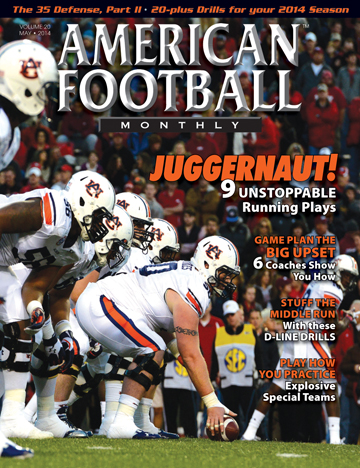Article CategoriesAFM Magazine
|
BOTTLING UP THE RUN Complete D-Line Drills to Eliminate the Middle Running Gameby: Ned PanfileDefensive Coordinator and Defensive Line Coach - Mendham High School (NJ) © More from this issue We run the Virginia Tech G defense as our base. We have melded that into the 4-2-5 and added 3-4 to our schemes. However, the G is where we start everything. Everything builds on the G. Our league has not made the transition to the spread offense, so we are part of a Delaware and I-zone league. We are not stopping the run on the way to the quarterback; rather, we are a read and react defense. Trends will change and we have adapted some new things to defend the spread offense. But, in our basic defenses, we have to stop the run first. We do that by constant drill and repetition of what an offensive lineman does and the defensive lineman’s reaction. When we use the word “spill” on the defensive line, it means never letting the ball carrier run the ball inside from defensive end to defensive end. We spill the ball carrier to th....The full article can only be seen by subscribers.
|
|
|||||||
| HOME |
MAGAZINE |
SUBSCRIBE | ONLINE COLUMNISTS | COACHING VIDEOS |
Copyright 2025, AmericanFootballMonthly.com
All Rights Reserved





